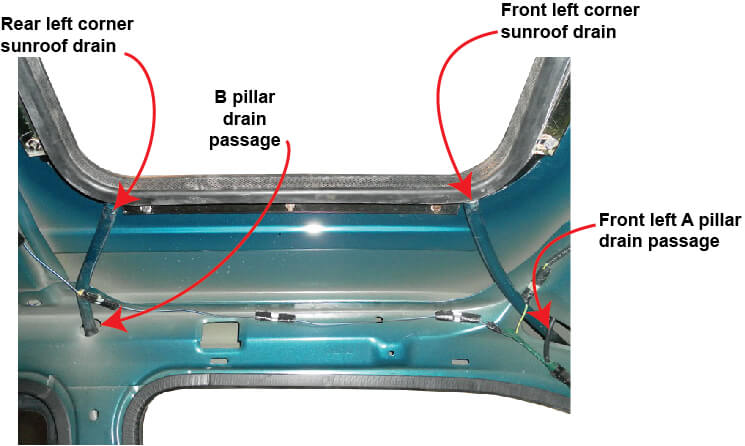
- #AC DRAIN LINE DIAGRAM CRACKED#
- #AC DRAIN LINE DIAGRAM INSTALL#
- #AC DRAIN LINE DIAGRAM FULL#
- #AC DRAIN LINE DIAGRAM PROFESSIONAL#
Before removing the access panel and inspecting the overflow pan, turn off power to the air conditioner.
#AC DRAIN LINE DIAGRAM CRACKED#
#AC DRAIN LINE DIAGRAM PROFESSIONAL#
If it is beyond a simple repair, however, it’s best to contact a professional for replacement. Small holes and even cracks can be patched up with water sealant or epoxy glue. This condensation then flows into the PVC condensate drain pipe to be directed outdoors.īy using a flashlight and about a gallon of water, you’ll be able to locate and evaluate the condition of the overflow pan and PVC drain pipe.

The overflow drain pan, located underneath your indoor evaporator coils, catches condensate that forms when warm air passes over cold evaporator coils. To prevent the common occurrence of system shutdowns and condensation leaks around your air conditioner, take some time to inspect the drain pan and condensate drain line. If your air conditioner won’t turn on, one of the first things you should check is the condensate drainage system. Some AC units have an overflow float switch that will turn the air conditioner off if it detects a condensate backup. Left unattended, the water will continue its downward trajectory through ceilings, walls, and floors. If water is pooling around your indoor air handler, you probably have an AC drainage problem. Unfortunately, sometimes condensate drain pans and lines can get damaged or clogged and cause quite a mess. Think of the water droplets that form on a cold drink in summer. If you get them confused you are creating a future problem.When warm air passes over extremely cold evaporator coils, condensation forms and drips into a drain pan below. Just know that there is a reason for the two connections: one is for your primary drain and the other is to avert disaster. But maybe not so obvious to the installer. The difference in the two drain connections was obvious – the secondary drain connection was located higher.
#AC DRAIN LINE DIAGRAM FULL#
The overflow pan was full of brown slime, and the drain to that overflow pan had stopped up and the water was now overflowing into the ceiling.

The primary drain was piped to an overflow drain pan under the unit and the secondary drain was connected to the actual condensate drain line which was completely dry and clean. The primary and secondary drain connections had been swapped. I saw a system this summer which was several years old and had never been piped correctly. Overflow switch connected to secondary drain connection on the left. If the secondary drain handles the water without incident it might not be noticed until it stops up as well. I like that because the customer knows there is a problem and calls for a correction.
#AC DRAIN LINE DIAGRAM INSTALL#
Often, the secondary drain line runs very short distance to an overflow drain pan or a condensate pump.Īnother way to utilize the secondary drain connection is to install a condensate overflow switch on the secondary drain connection so that the system shuts down if water builds up to that level. If the drain line gets plugged up and both drain connections run to it, there is really no point in having a secondary drain connection. The secondary and primary should not run to the same drain line. Most manufacturers recommend that the primary drain be trapped, but the secondary is typically not trapped. Notice the internal dam on the secondary drain connection. Primary drain on the right and secondary drain on the left. Sometimes this is done using an internal dam which forces water to go through the primary drain unless it is plugged up. Since the secondary connection is a backup drain, it is located slightly higher than the primary connection. The secondary drain provides an outlet for the water in case the primary gets plugged up. It is important to recognize the difference between a primary and secondary drain connection and pipe them correctly. Sometimes they have more than one set for convenience, and sometimes they have multiple sets because the coil can be positioned more than one way. Most coils have both primary and secondary drain connections.

Have you ever wondered why evaporator coils often have several drain connections? It is not because the manufacturer had extra PVC drain plugs they needed to use.



 0 kommentar(er)
0 kommentar(er)
